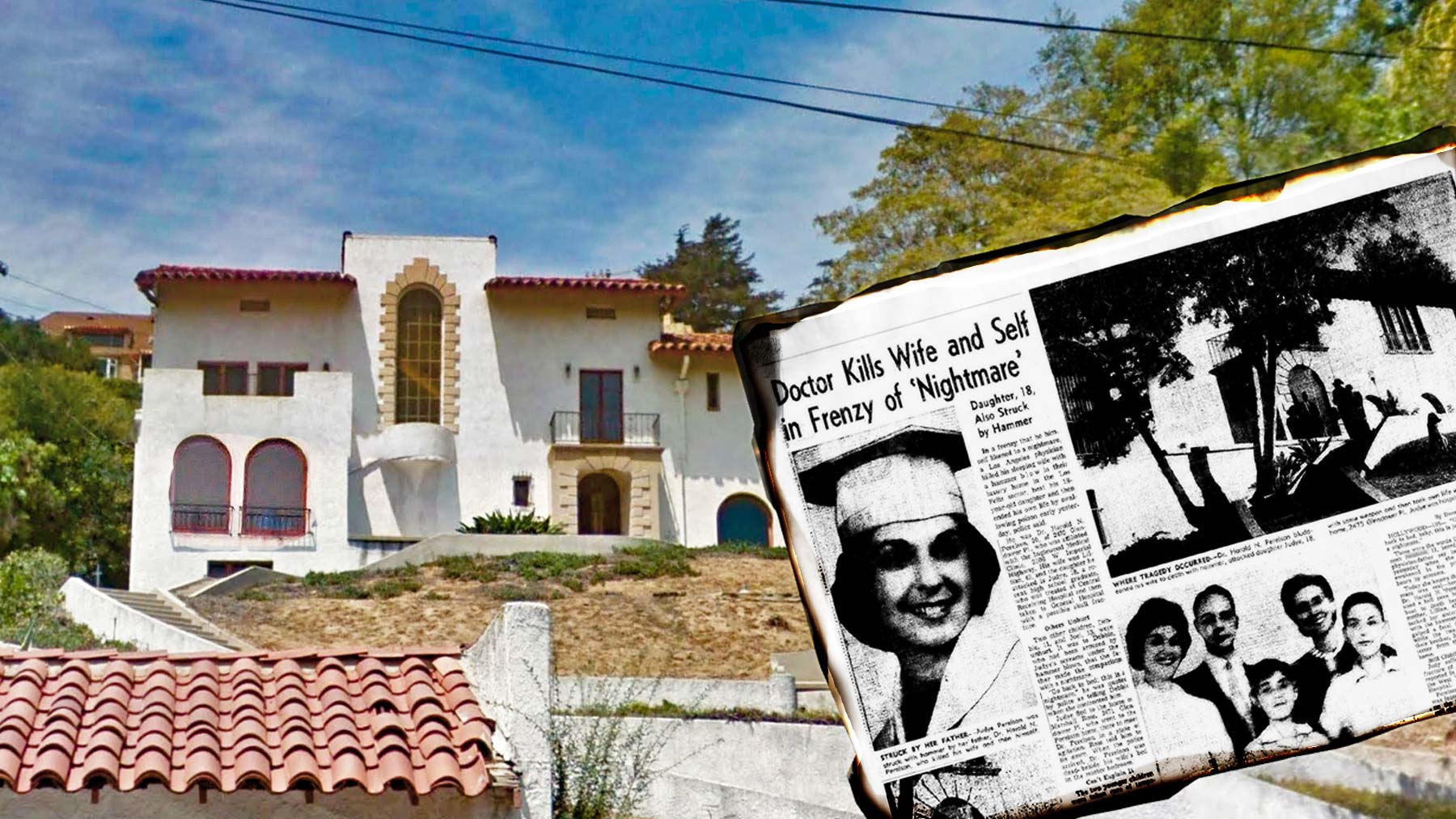
Google Maps; LA Times
Tech investor Braden Pollock closed on a four-bedroom, Spanish Revival-style mansion sitting atop a hill with an unobstructed view of downtown Los Angeles in 2016. The house, built in 1925, comes with a library and a ballroom and sits on nearly two-thirds of an acre in the hilly neighborhood of Los Feliz. Pollock got the place for a steal at a probate auction back in June.
There was a reason for the bargain. The home comes with something else, too: a history. An unfortunate one.
Known in popular imagination as “The Los Feliz Mansion,” the house was the site of one of the most haunting and highly publicized murders in L.A. history. Early one morning in 1959, cardiologist Harold Perelson beat his wife, Lillian Perelson, to death with a ball-peen hammer, and then tried—and failed—to slay his 18-year-old daughter by bashing in her head with the same weapon.
She screamed “Don’t kill me!” so loudly that she woke up her neighbors as well as her younger brother and sister. The doctor told the children to go back to bed because they were having a nightmare. (True.) He then swallowed a lethal cocktail and was found dead in his bedroom beside the body of his wife. No one ever determined what brought on the murderous rampage.
Some believe the place has been haunted ever since. In the decades following the tragedy, the house sat mostly empty.
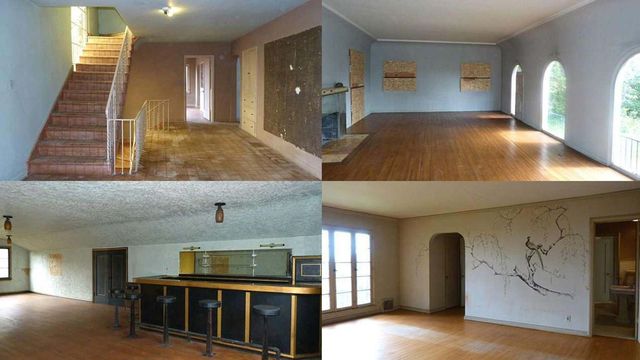
realtor.com
“It doesn’t affect me,” Pollock said of the home’s grisly history, shortly after purchasing it. “It was a great opportunity to get a rare property like this at a good price.”
Pollock and his wife, television legal analyst Lisa Bloom applied for renovation permits and stripped the home down to the studs. They had planned to move into the master bedroom where Lillian was killed. However, they never completed the renovations.
The home went back on the market late last year with a $3.5 million price tag. That list price was dropped to $2.5 million in March. It’s now under contract.
Opportunity or nightmare? Would you buy a home that was the site of an infamous atrocity?
More to the point: why would anyone?
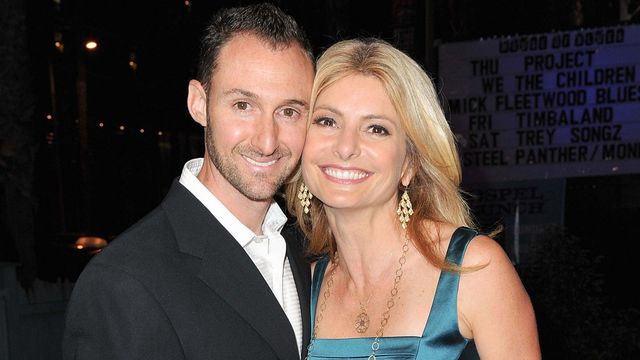
Michael Kovac/FilmMagic
As it turns out, buyers like Pollock, unfazed by dreadful crimes, are a rare breed. Many house hunters get the heebie-jeebies even setting foot in a home where someone died of natural causes—let alone one where someone was bludgeoned to death. It’s just too much bad juju.
And yet, eventually, even the most famous murder houses—even including the homes where Nicole Brown Simpson and JonBenét Ramsey died—will usually get snapped up by all sorts of buyers. If they don’t get razed to the ground, that is.
Let us count the (grisly) reasons: Penny-pinchers are lured by the steep discounts. Entrepreneurs see business opportunities. Some house hunters hope that they can transform the gory karma of these abodes. Others are true crime and haunted house junkies. And some buyers are simply not perturbed by what happened, no matter how horrific.
Here’s the killer truth: Buying a murder house might actually be a sound financial investment. If you can handle it.
Trying to save a few bucks? Buy a murder home!
Even the bloodiest murder homes may appeal to buyers on a budget—the macabre residences are typically discounted by about 10% to 15%, says real estate appraiser Orell Anderson, who valued the Simpson and Ramsey residences.
If the crime involved a celebrity, or was so horrendous that it made national news night after night, that price cut could be even more—between 15% and 50%.
“Most people are creeped out and need to have an incentive to buy,” says Anderson, president of Strategic Property Analytics in Laguna Beach, CA.

Always check out the previous owner of the house you’re buying.
Brooks Kraft LLC/Sygma via Getty Images
For example, the seven-bedroom mansion where 39 Nike-shod members of the Heaven’s Gate cult killed themselves in 1997 in order to reach what they believed was an alien spacecraft, was sold for $668,000 in 1999. That’s less than half of the $1.6 million that the San Diego mansion was listed for before the mass suicide.
“It was a significant tragedy,” says Anderson, who was one of the appraisers. Another reason for the price cut was the stench of the decomposing bodies, discovered days after their deaths, that “just permeated the walls of the structure.”
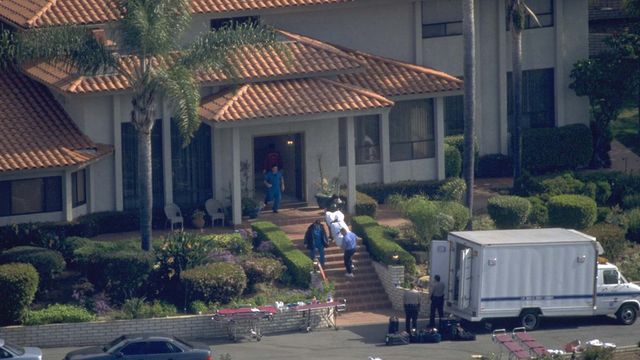
Axel Koester/Sygma/Sygma via Getty Images
Can a home’s dark legacy be undone?
Some owners hope that by moving their families into a murder home, they can change its evil karma.
Pollock, for instance, believed that he and his family could offer the mansion a new narrative. “I don’t want to live in a murder mansion. I want it to be my home,” he said after the purchase. “I want it to be associated with love and happiness.”
Carol Schuller Milner bought JonBenét Ramsey’s Boulder, CO, home in 2004 for $1.05 million for similar reasons. The house where the 6-year-old beauty queen was found dead in 1996 had become a “dark monument” to “something horrible that happened,” she told Inside Edition. So she wanted to undo that legacy.
“It’s full of joy again. It’s full of life again,” she said.
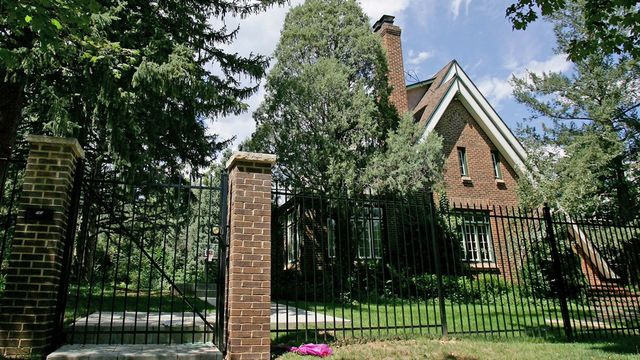
Doug Pensinger/Getty Images
Leaving the past in the past
Other buyers simply aren’t overly concerned with the appalling history of their dwellings.
Socialite Katharine Thompson Wood was beaten to death in her bed in 1967 in the Centerville, DE, house now owned by former Delaware Republican Chairman Terry Strine.
“It’s irrelevant,” says Strine of the horror that occurred in the five-bedroom house all those years ago. “After all, how many houses that are 50 years or older have not had someone pass away in them?”
Strine, who lives there with his wife and three children, added that it’s a “great home” in a “great area.” “The only history that counts is mine,” he says.
Murder home premium? Only in New Orleans
In a handful of ghost-loving cities, a good horror story may actually boost the price of a home.
Just look at the five luxury apartments in the “Sultan’s Mansion” in the French Quarter of New Orleans. One of the furnished, two-bedroom units in the purportedly haunted building is going for $2,500 a month, as compared to the city’s median price of $1,650.
Legend has it that the brother of a Turkish sultan rented out the property, also known as the Gardette-LePretre Mansion, in the mid-19th century. One morning, a neighbor saw blood oozing out of the front door. When police arrived, they reportedly discovered the mutilated body parts of the Turk’s harem, guests, and guards scattered throughout the house. The sultan’s brother was allegedly found buried alive in the courtyard.
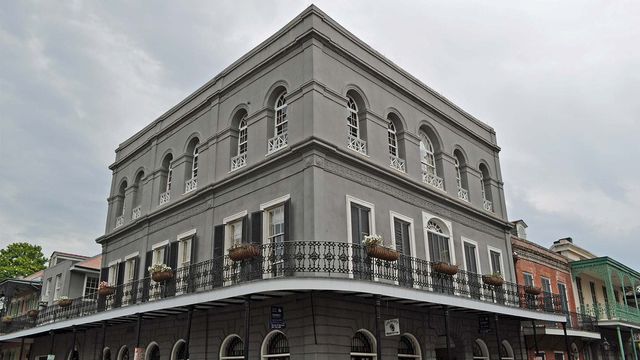
Steven Wagner/Getty Images
“Sometimes in New Orleans a house will bring a higher price because it’s documented as being haunted,” says local Realtor Bryan Drude, of Keller Williams Realty, who rents out units in the building.
Another prime example is the LaLaurie Mansion, which had a starring role in the witch-centric “Coven” season of “American Horror Story.” It was owned by Delphine LaLaurie, a socialite with an evil appetite. The depths of her depravity were revealed when a fire swept through the mansion in 1834. Firefighters allegedly discovered more than a dozen slaves chained and caged in the attic who had been viciously tortured.
The atrocities didn’t scare away one previous owner, Jay Monroe, CEO of satellite service provider Globalstar. He lived there for about half a dozen years with his wife and two children.
“It’s just a magnificent French Quarter mansion,” says Monroe, who says he never experienced any paranormal activity there.
What he did find disturbing about the mansion were the ghost tours it attracted.
“There would be a hundred people a night, looking up and telling absurd stories,” he says. “It was annoying with a capital ‘A.’”
In 2006, he sold the mansion to actor Nicolas Cage for top dollar—a cool $3.45 million. After Cage fell on hard times, it was foreclosed on in 2009. The mansion was sold to an energy investor for $2.1 million in 2010, according to realtor.com® records.
Cashing in on a murder mystery
And sometimes, a famously unsolved homicide can present a sweet business opportunity for a home’s new owners. Case in point: the Lizzie Borden house.
On Aug. 4, 1892, the mutilated bodies of her father and stepmother, Andrew and Abby Borden, were found in their Fall River, MA, home. Lizzie Borden was arrested for their murders, but acquitted a year later. The murderer’s identity remains a mystery.
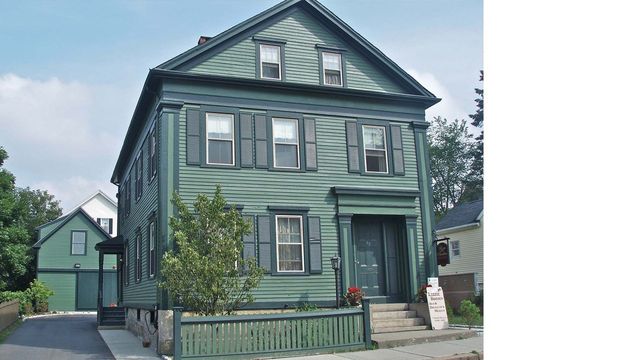
Wikipedia CC
Lee-ann Wilber, a former truck driver and retail store manager, capitalized on the unsolved crime when she bought the Lizzie Borden Bed & Breakfast Museum with a business partner in 2004. Tours of the home are now offered seven days a week, and guests can stay overnight in one of the B&B’s eight bedrooms. Axes not included.
One of the B&B’s main selling points is the belief among some guests that the joint is haunted. (Cue terrifying music.)
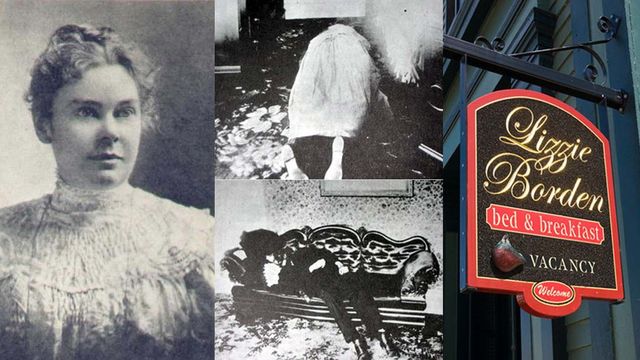
Wikipedia CC; Dennis K. Johnson/Getty Images
Wilber claims she was doing laundry in the basement soon after she bought the house, when “I felt like I walked into a walk-in freezer. It felt like someone ran their finger down me.”
She’s experienced other unexplained things as well, like bedroom furniture moving in the middle of the night or doors opening and closing on their own.
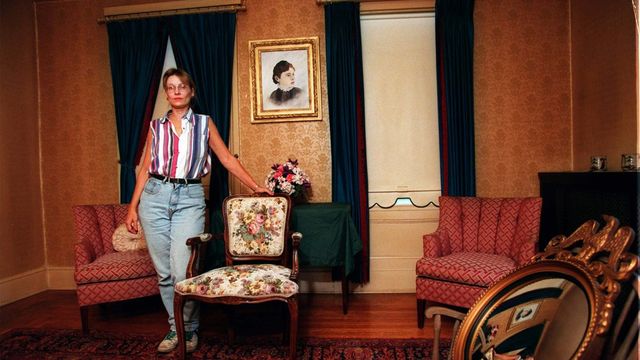
Barry Chin/The Boston Globe via Getty Images
But just because someone died in a house doesn’t mean it’s haunted, says Robb Phillips, founder of Paranormal Technology Investigations, a group of real-life ghostbusters based in Jonesborough, TN. The group, which accepts donations in lieu of fees, performs blessings and exorcisms.
If buyers aren’t looking for a ghost as an amenity in their new home, he recommends they ask their real estate agents about the home’s history … and whether it was built on a burial site.
Sellers in three states are required to inform house hunters if someone has died on the premises. In South Dakota and Alaska, only murder and suicides that happened in the last year need to be revealed; in In California, all deaths in the last three years must be disclosed.
“If someone just died a natural death in it from natural causes, I think it would be OK to go ahead and live in the home,” Phillips says. But if there was a murder, “there could be something evil there.”
Why no one wants to buy Jeffrey Dahmer’s childhood home
Some murder homes, however, have a hell of a time finding a buyer. Musician Chris Butler, of the new wave band the Waitresses, has been trying to sell the Akron, OH, childhood home of serial killer/cannibal Jeffrey Dahmer for the last few years. This is the three-bedroom house home where Dahmer killed and dismembered his first victim, Steven Hicks.

EUGENE GARCIA/AFP/Getty Images
Butler, who declined to speak with realtor.com, told NPR that he bought it in 2005 because he wanted to live somewhere “where I could make a loud musical racket and not bug my neighbors.”
But Dahmer isn’t the only thing scaring away buyers, says Realtor Richard Lubinski, who once listed the property. The high price and its lack of curb appeal played a part as well, he says.
The house, which is not currently for sale, was most recently advertised at $295,000, more than double the $132,400 median list price in the Akron metro area as of Sept. 1, according to realtor.com. It was also offered for rent during the Republican National Convention in July.
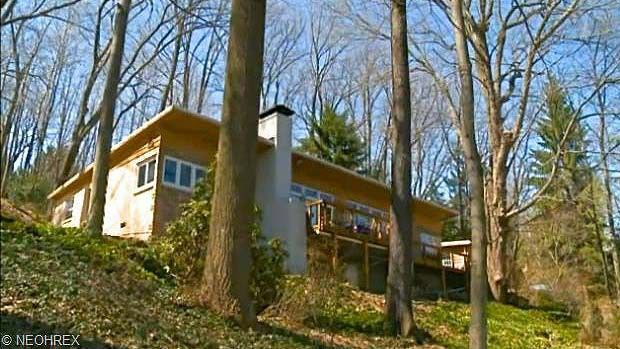
realtor.com
Secrets of selling horror houses
Some agents roll out special tricks when their homicide homes aren’t leaping off the market. Addresses can be altered to make it harder for lookie-loos to find. And the exterior can be modified so that it doesn’t look like the crime-scene photos anymore.
One famous example: The street number and trajectory of the walkway of Nicole Brown Simpson’s four-bedroom condo were changed. Despite this, the property still initially sold for a 15% discount, Anderson says. It went for $595,000 in 1997 and then for $1.7 million in 2006.
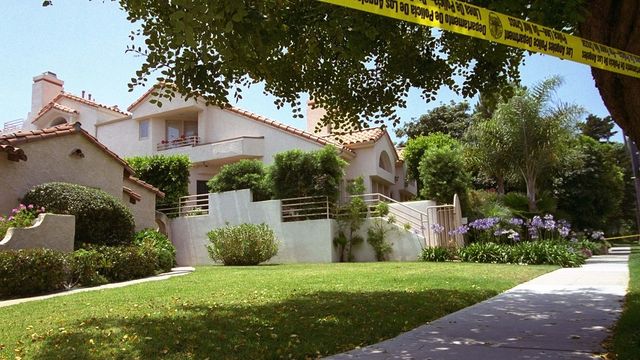
AP Photo/Eric Draper
“If there’s a suicide or a murder [in a home], it’s a big deal,” says Beverly Hills-based luxury Realtor Scott Tamkin, who sold the home where Simpson and Ron Goldman were killed in 1994. “People feel uncomfortable that there may be a ghost in the house.” Some people, anyway.
The post A Place to Die For: Why People Buy Homes Where Brutal Murders Occurred appeared first on Real Estate News & Insights | realtor.com®.
